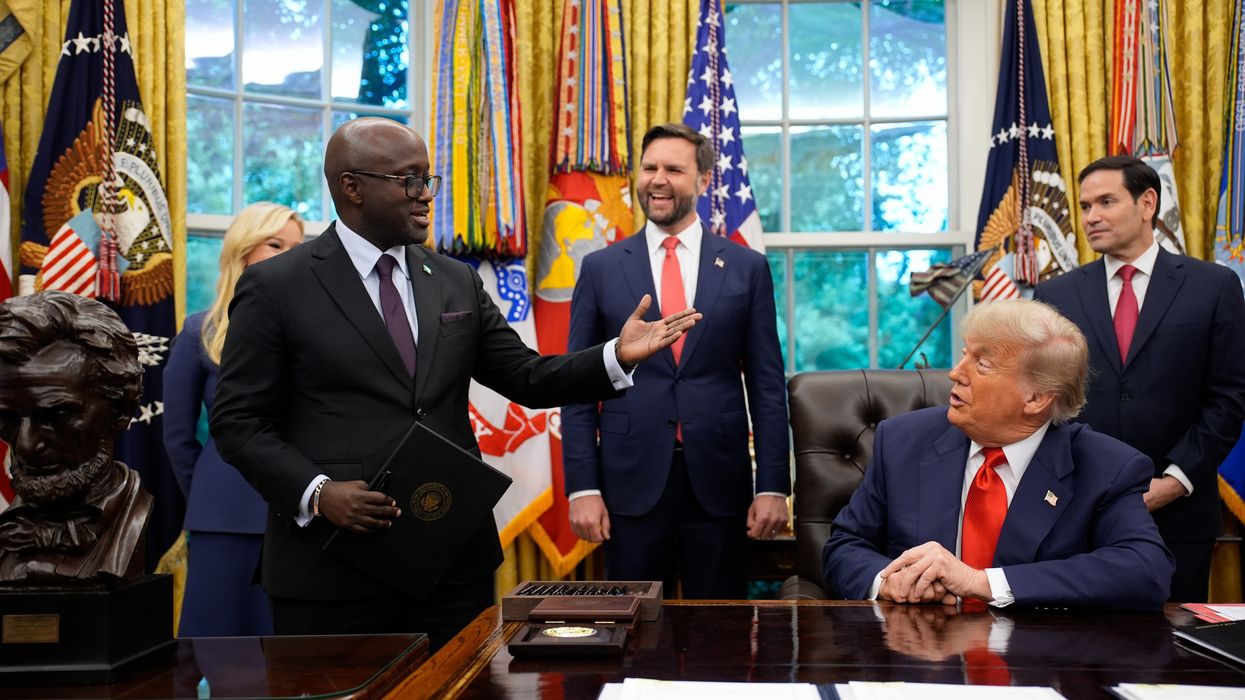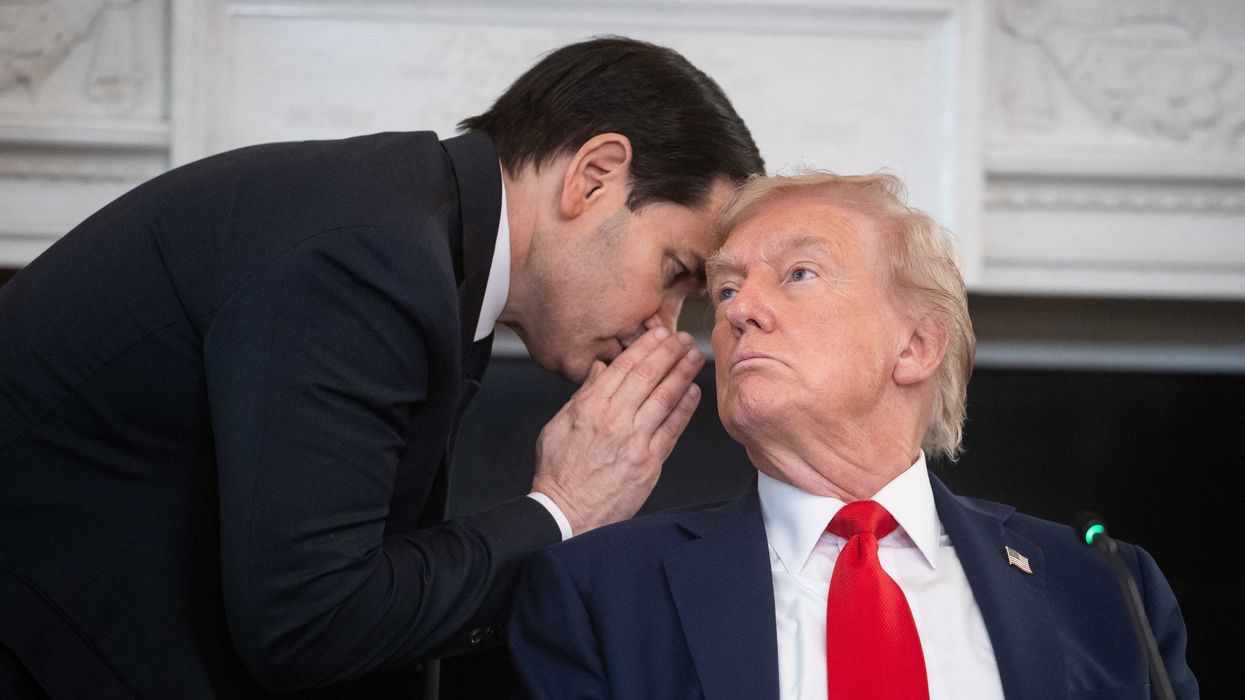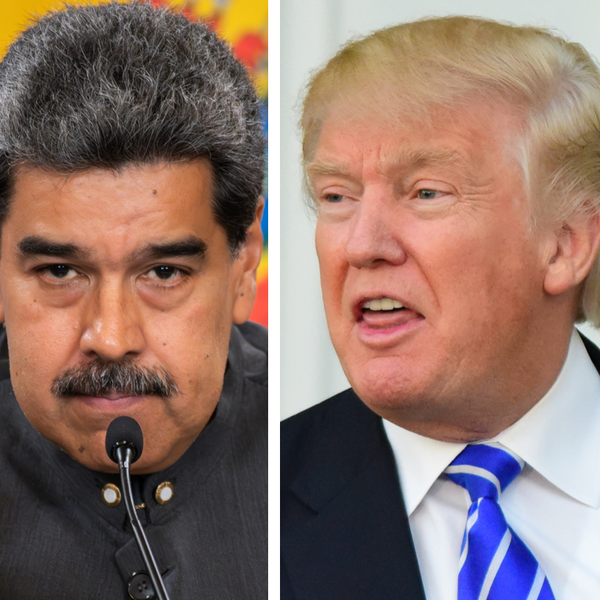May 27, 2020
Female leaders around the world have performed extremely well in managing the COVID-19 crisis, stoking further debate over how a female president might have handled the pandemic in the U.S. While a growing number of nations (Sweden, Canada, France, and Mexico) have recently adopted feminist foreign policies, the U.S. has not. Last week’s launch of a new paper — “Toward a Feminist Foreign Policy in the United States” — lays out a vision starkly different from the current administration’s.
“Advancing security in the broadest meaning of the word,” the framework centers diplomacy, multilateralism, human rights, and gender equity while reserving military force as a last resort.
Rooted in an intersectional feminist approach the paper addresses multiple, intersecting forms of discrimination, and seeks to transform U.S. foreign policy into a tool to advance social and gender justice around the world. Importantly, “Toward a Feminist Foreign Policy” pursues coherence across all government policies, including development, security, trade, and immigration at home and abroad.
Endorsed by nearly 60 organizations — including the National Democratic Institute, Amnesty International, Foreign Policy for America, and the International Center for Research on Women — the paper proposes policy recommendations that can be summarized in five components: people, peace, planet, reporting, and accountability, and funding.
People
The report makes human rights, immigration, and staffing recommendations. Firmly grounded in international human rights law, it calls for the ratification of the 1979 Convention on the Elimination of All Forms of Discrimination against Women (the U.S. is one of only six U.N. member states that have not ratified it). The paper also underlines re-engaging multilateral institutions including the U.N. Human Rights Council, human rights treaty-bodies, and actualizing gender-related Sustainable Development Goals. Paramount is bodily autonomy which protects sexual and reproductive health and rights (and immediately ending the global gag rule) as well as the right to live free from gender-based violence.
On immigration, its outlook is predicated on human rights law, immediately committing to end the current administration’s family separation policy and to “establish a Blue-Ribbon Commission to analyze the impact of immigration policies on women, children and transgender people.” The plan underscores a feminist foreign policy’s holistic commitment to addressing cross-cutting forms of discrimination based on gender, race, age, language, socioeconomic status, physical or mental ability, sexual orientation, indigenous identity, religion, ethnicity, citizenship, nationality, and migration status.
On staffing, the paper calls for establishing new senior leadership positions including a Feminist Council in the White House and high-level representatives reporting to the secretary of state and the secretary of defense or national security adviser. Furthermore, it presses for gender parity in political appointments and throughout all agencies and ranks of government, a commitment Secretary-General António Guterres has made within the U.N. “Toward a Feminist Foreign Policy” specifies provisions like workplace protections against gender-based violence and harassment — particularly relevant at a moment when the federal government is led by a man who has regularly celebrated his own abuse of women.
Through re-enforcing human rights law and institutions, achieving gender and intersectional parity, a feminist U.S. foreign policy would bolster the ability to institutionalize equity domestically and globally.
Peace
This feminist foreign policy vision prioritizes diplomacy and military restraint to achieve peace and security. Five notable areas include:
First, advancing the Women, Peace and Security (WPS) agenda (U.N. Security Council Resolution 1325 and related resolutions). The vision does not explicitly call for a dedicated Ambassador for WPS (which Canada has), but would act upon mounting evidence that the equitable representation of women in peace processes leads to more sustainable and successful outcomes.
Second, centering gender in bilateral and multilateral engagements. The paper calls for “redlines around where engagement is helpful to those whose rights are abused and where, even if it serves national interests, the U.S. cannot engage with such states.” Moreover, it asserts that security assistance be “vetted for its effects on women and historically marginalized communities to determine its long-term costs as well as benefits.” For example, if implemented such provisions would significantly reshape the U.S. approach to Yemen.
Third, re-engagement with the global goal of nuclear disarmament.
Fourth, a thorough gender analysis informing the president’s National Security Strategy, which outlines major national security concerns and policies to address them.
Fifth, protections in the military including: preventing and encouraging the reporting of gender-based violence, providing comprehensive services to survivors, implementing “meaningful and consistently implemented justice mechanisms,” and ensuring sexual and reproductive health services for service members.
These recommendations integrate feminist principles into foreign policy decision-making processes, prioritizing sustainable approaches to addressing conflict through the use of peacebuilding, multilateralism, de-escalation, and human rights.
Planet
“Toward a Feminist Foreign Policy” re-envisions the U.S. relationship to the planet, most substantially in the areas of climate change and trade. On climate change, the paper recognizes that environmental degradation impacts the safety and security of “those who are most vulnerable to multiple and intersecting forms of discrimination” including women and girls. Therefore, it stresses the implementation of U.S. obligations under the Paris climate agreement, the UNFCCC gender action plan, and an analysis of the environmental impact resulting from U.S. foreign policy activities.
On trade, the paper advocates for the “incorporation of women’s human rights and gender equality in bilateral and multilateral trade agreements” as well as the adoption of the “polluters pay” principle, which obligates polluters to bear the cost of protecting human health from the environmental harm they have caused.
This comprehensive vision looks to realize environmental integrity and justice by acknowledging that issues like climate and trade require coherent approaches across both foreign and domestic policy.
Reporting and accountability
The authors acknowledge the essential role of rigorous reporting, evidence, and accountability mechanisms to ensure successful implementation of this feminist foreign policy. A key component of the paper is establishing gender analysis as a “standard practice in program implementation throughout the government, tailored to each agency.” For example, reporting on all aspects of women’s human rights in the State Department’s annual Country Reports on Human Rights Practices. Given that this approach has been an established norm for years, it is surprising that the U.S. has yet to adopt such guidelines.
The paper’s robust accountability measures would ensure implementation that is “evidence-based, transparent and inclusive of individuals impacted by its practice,” including public justification for “foreign policy decisions [that] contravene the principles of feminist foreign policy, including in cases of national security.”
Funding
Appropriate resources must be allocated to realize the paper’s ambitious vision. It should be noted that even if implemented entirely, a feminist U.S. foreign policy would likely cost just a fraction of the $740.5 billion the current administration has budgeted for the Pentagon in 2021. In addition to resourcing the proposed initiatives, the paper highlights the importance of provisions for the funding, including: committing at least 20 percent of Official Development Assistance where gender equality is a principal objective; substantially increasing direct investments in local, women-led and feminist organizations central to advancing long-term gender equality at home and globally; and the creation of a mechanism similar to the Canadian government’s $300M Equality Fund. These recommendations demonstrate that the authors have correctly recognized that to achieve the paper’s objectives — in addition to more funding — funds must be directly invested in women’s rights and feminist movements.
***
The COVID-19 moment marks the end of an era for U.S. foreign policy, and presents an opportunity for a new vision of bold internationalism. At the launch of this feminist foreign policy vision, the authors acknowledged that the paper is aspirational, seeking “what is necessary... and not simply what is practical.” Some of these aspirations will be opposed by entrenched interests hostile to challenges of the status quo (e.g. “the Blob,” the military industrial complex, and the current administration and its anti-rights agenda). Feminist foreign policy priorities, however, do align well with Vice President Biden’s announced commitments to gender equity (selecting a woman as Vice President, an African-American woman for the Supreme Court, gender parity in his cabinet and national security/foreign policy appointments, and endorsing other important gender equity issues). Biden’s double-digit polling advantage over the incumbent suggests that a feminist foreign policy could be a reality in the near future. This year marks 25 years since the adoption of the Beijing Platform for Action for gender equality and 20 years since the U.N Security Council’s adoption of the first WPS resolution. A less celebrated event is next year’s 20 year anniversary of the onset of the U.S.-led war in Afghanistan, which prominently touted women’s rights in justifying military intervention. Women have been an afterthought as the U.S. withdraws, however, as peace negotiations have tokenized women and have not guaranteed their rights. Subsequent intra-Afghan talks have been held with women leaders absent. Nearly two decades of war have had massive consequences for civilians in the country; the Taliban control or contest much of the country, poverty is above 54 percent, the country is one of the world’s most corrupt — all of which make it is no surprise that 47 percent of Afghan women would leave if they could. One wonders what the country may have looked like had the U.S. invested $1.5 trillion in a feminist foreign policy vision for Afghanistan since 2001 rather than an unwinnable war.















